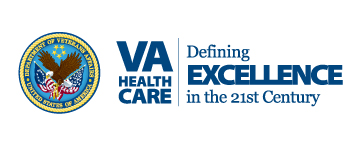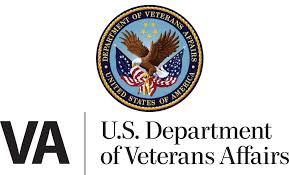Health Issues
Newswise — Over the last decade, repair of the mitral valve (MV) has become widely favored over its replacement. Data available from such sources as the Society of Thoracic Surgeons Adult Cardiac Surgery Database (STS ACSD) have documented this trend at non-governmental hospitals, but there is little known about mitral surgery practice in the largest federal health system in the US - the Veterans Affairs (VA) Health System. In a presentation at the 96th AATS Annual Meeting, Faisal G. Bakaeen, MD, presents data from more than 4,100 mitral valve surgeries showing that mitral valve operations are performed with low mortality in the VA and that the percentage of repair vs. replacement surgeries has increased significantly since 2001. However, despite the survival advantage for mitral repair in primary mitral regurgitation, the rate of valve repair was quite variable among the VA centers and offers an opportunity for system-wide quality improvement.
Baltimore, MD, May 17, 2016 – Little is known about mitral valve (MV) surgical outcomes within the largest US federal health system – the Veterans Administration (VA) Health System. At the 96th AATS Annual Meeting, data presented from 40 VA cardiac surgery centers reveal that although MV repair rates increased from 48% in 2001 to 63% in 2013, a wide variability exists in repair rates among medical centers. This is especially important because MV repair mortality rates were significantly lower in patients with primary degenerative disease.
“This large multi-center study adds further evidence to support the use of MV repair over replacement in patients with degenerative MV disease. Despite the benefits associated with MV repair, the rate of valve repair utilization varied widely among centers and presents an opportunity for education and quality improvement”, explained lead author Faisal G. Bakaeen, MD, Department of Surgery, Baylor College of Medicine, The Michael E. DeBakey VA Medical Center (Houston, TX), and the Department of Thoracic and Cardiovascular Surgery, Cleveland Clinic (Cleveland OH).
The investigators found that between 2001 and 2013, 4,165 mitral valve surgeries were performed, including 2,408 MV repairs and 1,757 MV replacements at 40 VA centers. The overall MV repair rate increased from 48% of the total number of MV surgeries to 63% in 2013. “The increased rate of MV repairs in VA hospitals mirrors the trend revealed by analyses of the STS ACSD,” commented Dr. Bakaeen. “These findings indicate that the introduction and adoption of novel surgical procedures occur in tandem at VA and non-VA facilities. This is expected because all VA cardiac programs are affiliated with academic centers and some share faculty and educational programs with their university affiliates.”
The study highlighted other advantages of MV repair compared to MV replacement, including fewer complications around the time of surgery and shorter hospital stays. MV repair also showed some survival advantage. While some differences between surgical groups were sometimes not statistically significant (e.g. unadjusted and adjusted 30-day operative mortality rates), mortality rates for MV repair were significantly lower at both 180 days (2.5% vs. 5.0%) and 365 days (3.0% vs. 5.7%) in patients with primary degenerative disease. After 10 years, mortality was marginally lower for MV repair.
When the investigators examined annual MV procedural volume per medical center, they found it varied widely: from 0 to 29, with a median of 7. The median number of annual MV repairs ranged from 0 to 21, with a median of 4 per center.
Other studies have suggested that MV surgery volume is a significant predictor of greater MV repair use and better mitral surgery outcomes. In fact, some reports have specified that 40 MV repairs per year should be the minimum number performed annually to maintain a high level of care. This report, however, found that none of the VA centers met this 40 case per year threshold and, in fact, center volume accounted for only 19% of the total variation in facility-level MV repair.
Dr. Bakaeen noted that the 40 case per year threshold may not be applicable to the VA system. “VA hospitals are not typical low-volume community hospitals. The shared-faculty model and educational collaboration that exists between some VAs and their academic affiliates may help mitigate these hospitals’ low-volume status, which would explain their good MV outcomes.” Nevertheless, he suggests that determining why MV repair rates are very low in some VA hospitals presents an opportunity for quality improvement.
Newswise — In a Veterans Affairs study of more than 300 enlisted Army National Guard and Army Reserve members who had deployed to Iraq or Afghanistan, a majority reported symptoms consistent with a condition known as chronic multisymptom illness (CMI). The data were collected a year after the soldiers returned home.
The results suggest that deployment to these conflicts could trigger symptoms consistent with CMI.
The ailment presents as a combination of medically unexplained chronic symptoms, such as fatigue, headache, joint pain, indigestion, insomnia, dizziness, breathing problems, and memory problems.
The study, by researchers with VA's War-Related Illness and Injury Study Center (WRIISC) in New Jersey, appeared online Feb. 22, 2016, in the Journal of Rehabilitation Research and Development.
"As a whole, CMI can be challenging to evaluate and manage," said lead author Dr. Lisa McAndrew. "CMI is distinct from PTSD or depression. It contributes to significant disability."
McAndrew is also with the University at Albany.
In the veteran community, chronic multisymptom illness has previously been associated mainly with service during the Persian Gulf War in the early 1990s. At least a quarter of those veterans are affected.
Experts aren't sure, though, if that condition is the same one that has emerged among more recent veterans, as documented in the newest WRIISC study and one or two earlier ones. Last year, for example, researchers with the Millennium Cohort Study reported that about a third of combat veterans who served in Iraq and Afghanistan had CMI symptoms.
"This condition appears to be similar to that experienced by many Gulf War veterans, in terms of the symptoms, but we don't really know if it's the same condition," says McAndrew. "That still requires study."
McAndrew and her colleagues surveyed 319 soldiers about their overall health before they deployed and one year after they returned. The VA team found there were 150 soldiers who did not report many symptoms before they deployed but who reported symptoms of CMI one year after deployment, suggesting a link between deployment to Iraq or Afghanistan and CMI.
In total, nearly 50 percent of the overall group met the criteria for mild to moderate CMI, and about 11 percent met the criteria for severe CMI, one year after deployment.
The most common symptoms reported were trouble sleeping, moodiness or irritability, joint pain, fatigue, difficulty remembering or concentrating, headaches, and sinus congestion.
Not surprisingly, the researchers found that veterans who screened positive for CMI scored significantly lower on measures of physical and mental health function.
Of the 319 veterans in the study, 166 had chronic pain, lasting more than three months. Almost all of those with chronic pain--90 percent--also met the criteria for CMI. Similarly, 82 percent of those with CMI reported chronic pain.
The finding underscores the strong link between chronic pain and CMI, say the researchers.
The study also found that almost all veterans with PTSD symptoms also showed signs of CMI--about 98 percent. Only seven patients had PTSD and did not meet the criteria for CMI. In contrast, though, about 44 percent of the veterans with CMI did not have PTSD. In other words, the link between PTSD and CMI was not as robust as that between chronic pain and CMI.
The authors caution that the study looked only at pain and PTSD as factors tied in with CMI. It did not document other conditions that could possibly account for the symptoms of CMI, such as depression, traumatic brain injury, and substance abuse. At the same time, they say these other conditions are unlikely to completely account for the frequency of symptoms seen in the study.
By the same token, other conditions not examined in the study, such as arthritis or multiple sclerosis, could cause symptoms similar to those of CMI. More research is needed to tease out those variables.
Another limitation of the study: The research team used a definition of CMI, established by the Centers for Disease Control and Prevention (CDC), that is based on Gulf War Veterans. They say it might not exactly fit the symptoms of veterans of the more recent conflicts.
Also, it's unclear whether the Guard and Reserve members surveyed in the study are representative of the larger veteran or military cohort who deployed to Iraq and Afghanistan.
All in all, the research team advises that the results be interpreted with caution.
"We're taking the approach that an abundance of caution is necessary in the clinical implications of the findings," says McAndrew. "Respondents self-reported symptoms on pen and paper surveys. The symptoms were not confirmed or evaluated by a clinician. While the CDC case definition is fairly clear-cut, in clinical practice there is a lot of gray area around applying the label of CMI. We used the term 'symptoms consistent with CMI' to indicate the uncertainty due to the self-reported, clinician-unverified nature of the classification."
Pending further research on the topic, McAndrew's group says clinicians in VA or other settings should consider CMI when evaluating Iraq and Afghanistan Veterans, especially those with chronic pain. Once the condition is identified, clinicians in VA and the Department of Defense do have a clinical practice guideline for managing the condition.
"Acknowledging the presence of multiple symptoms and taking a holistic approach to achieving patient goals is critical in managing CMI," says McAndrew. For example, pain management may need to be tailored to account for other symptoms of CMI.
The WRIISC study notwithstanding, McAndrew says not enough attention has been focused on the issue to date.
"There have been few studies of CMI among Iraq and Afghanistan veterans. Our findings suggest this could be an overlooked problem."
###
Senior researcher on the WRIISC study was Dr. Karen Quigley, now at the Edith Nourse Rogers Memorial Veterans Hospital and Northeastern University.
Craig Schroeder, who was injured in 2006 while serving with the Marines in Iraq, suffers from traumatic brain injury and pain, for which he has been on a steady regimen of opioids. (Ted Richardson/For The Washington Post)
New federal rules that make it harder to get narcotic painkillers are taking an unexpected toll on thousands of veterans who depend on these prescription drugs to treat a wide variety of ailments, such as missing limbs and post-traumatic stress.
The restrictions, adopted last summer by the Drug Enforcement Administration to curb a national epidemic of opioid abuse, are for the first time, in effect, forcing veterans to return to the doctor every month to renew their medication, although many were already struggling to get appointments at overburdened VA health facilities. And even if patients can get appointments, the new rules pose an additional hardship for many who live a good distance from the health centers.
Although the tighter regulation applies to everyone on opioid painkillers, it’s hitting veterans especially hard because so many are being treated for horrific injuries sustained during the long wars in Iraq and Afghanistan and have become dependent on the Department of Veterans Affairs’ beleaguered health-care system for medical care.
The rules come at a time of turmoil for VA. The agency’s widespread problem with patient backlogs burst into view last year with revelations that employees had covered up how long veterans had to wait for care, even for such pressing matters as cancer and suicide prevention.
In dramatically curtailing access to the highly addictive painkillers, the government is trying to roll back what the Centers for Disease Control and Prevention has termed “the worst drug addiction epidemic in the country’s history, killing more people than heroin and crack cocaine.” The rules apply to “hydrocodone combination products,” such as Vicodin.
More than half a million veterans are now on prescription opioids, according to VA.
Pain experts at VA say that in hindsight they have been overmedicating veterans, and doctors at the Pentagon and VA now say that the use of the painkillers contributes to family strife, homelessness and even suicide among veterans. A study by the American Public Health Association in 2011 also showed that the overdose rate among VA patients is nearly double the national average.
But some veterans say they have come to depend on these painkillers to function and now, unable to get a timely renewal of the prescription, are suffering withdrawal symptoms that feel like a panic attack and the flu at the same time.
Craig Schroeder was injured in a makeshift-bomb explosion while serving as a Marine corporal in the “Triangle of Death,” a region south of Baghdad. He suffers from traumatic brain injury, which has affected his hearing, memory and movement, and from pain related to a broken foot and ankle and a herniated disc in his back. He has been on a steady regimen of opioids.
But after the DEA regulations were put in place, he was unable to get an appointment to see his doctor for nearly five months, he said. He stayed in bed at his home in North Carolina much of that time.
“It was a nightmare. I was just in unbearable, terrible pain,” he said. “I couldn’t even go to the ER because those doctors won’t write those scripts.
”His wife, Stephanie Schroeder, said getting him a VA appointment turned into a part-time job and her “main mission in life.” While part of the problem was a shortage of doctors, she said she also noticed that VA had become hostile toward patients who asked for painkillers.
“Suddenly, the VA treats people on pain meds like the new lepers,” she said. “It feels like they told us for years to take these drugs, didn’t offer us any other ideas, and now we’re suddenly demonized, second-class citizens.
”Officials at Disabled American Veterans, a veterans service organization, said VA needs to be more compassionate and help veterans through the changes.
“We’re hearing from veterans with lifelong disabilities, who never had a problem with addiction issues. They have been on these drugs for decades, and then all of a sudden it was boom, a total change in attitudes,” said Joy Ilem, the group’s deputy national legislative director.
Gavin West, a clinical operations chief at VA, said there has been a systematic effort since autumn to contact veterans to explain the new rules, broader concerns about opioid use and alternative options for treatment. At the same time, he said, the agency is working to ensure that veterans get the access to medical care that’s required.
“The DEA did a good thing here for opioid safety,” he said. But he added, “How do you balance the sensitivity of patients and the new rules when all of a sudden a veteran, who’s been treated with this medication for 15 years or 20 years, has everything change?”
To help patients adjust to the changes, Rollin Gallagher, VA’s national director for pain management, said staff members are meeting personally with veterans. “There is the real anxiety of being in pain and losing control of that pain. We are aware of the fact that we need to pay attention to this,” he said.
The agency recently set up a Choice Card program for veterans, which would allow those facing long wait lists or who live more than 40 miles away from a VA hospital to use private clinic visits. Veterans say the initiative iscomplicated and confusing. VA officials acknowledged this month that veterans have been using this program at a lower rate than anticipated.
[Veterans say new choice cards are causing more problems]
DEA officials declined to comment on the specific challenges that the new rules pose for veterans. Barbara L. Carreno, a DEA spokeswoman, said in a statement that everyone, including “practitioners employed by the U.S. Veterans Administration,” have to follow the new regulations. The officials said the rules are a response to multiple medical studies that have showed that the opioid overdose rate is higher in the United States than anywhere else.
DEA officials offer some flexibility, allowing doctors to write prescriptions for up to 90 days by post-dating them. But many VA doctors will not do that because of concerns over fraud or fatal overdoses; doctors are telling patients they need to come back every month, medical staff say.
Half of all returning troops suffer chronic pain, according to a study in the June issue of the Journal of the American Medical Association. So a new generation of pain doctors is pushing for alternative ways to help veterans cope with chronic pain. Some alternatives are acupuncture, bright light therapy and medical marijuana. As part of a $21.7 million initiative with the National Institutes of Health, VA is looking for therapies that could substitute for opioids.
“Our hospitals are doing some really exciting things to combat chronic pain and take care of our veterans. There are VA hospitals that are using alpha-stimulation devices to treat pain and depression,” VA Secretary Robert McDonald said. “That’s only going to continue and keep getting better. And we are getting there.”
[Federal research seeks alternatives to addictive opioids for veterans in pain]
In the meantime, however, veterans say they continue to bear the burden of the new restrictions on narcotic painkillers.
A retired staff Army sergeant who served in Iraq, who spoke on the condition of anonymity for medical privacy reasons, said he can’t drive because of shrapnel in his femur and pelvis. He takes the bus nearly two hours for “a one-minute consult” to get his medications. He has been taking them for more than nine years and has never had an addiction problem, he said.
Mike Davis, a retired Army corporal, said he shattered his left arm from the elbow to the fingertips when he fell off of a Pershing missile during maneuvers in Germany in 1979. Over the years, he has had six surgeries.
After the last one, in 2003, he was prescribed opioids and said he has been on them since. Davis, who now works as a social worker in Illinois, said he feels lucky to have found a combination of painkillers that works for him.
“It’s just insulting to the veteran to assume they are abusing these drugs,” said his wife, Linda Davis, who works as his personal patient advocate. “I’m fully aware that people doctor-shop, some docs overprescribe. But I think they need to realize that there’s a real difference between addiction and dependence.
”But Andrew Kolodny, president of Physicians for Responsible Opioid Prescribing, called the new DEA rules “the single most important change that could happen. The best way to treat any disease, whether it’s Ebola or opioid addiction, is to stop creating more people with the disease.”
At the same time, he said, VA needs to do far more to help veterans through the rocky transition.
“Unfortunately, veterans are the victims here,” Kolodny said. “The VA created this mess by aggressively jumping onto pills as the solution. But it’s not something you can just abruptly stop.”
by Emily Wax-Thibodeaux
Veterans Can Now Receive Care from Ascension Doctors through the Veterans Choice Program
ST. LOUIS, — Ascension, the nation’s largest nonprofit healthcare system and the world’s largest Catholic health system, announced a national partnership to provide care through the Veterans Choice Program, giving veterans the choice to receive care at Ascension locations across the country.
Now qualified U.S. veterans who face wait times in excess of 30 days at the Department of Veterans Affairs (VA) or have to travel farther than 40 miles from their home can receive care from Ascension doctors at 2,000 sites of care in 24 states and the District of Columbia.
“Ascension doctors, hospitals and clinics are humbled to be able to provide care to veterans through the Veterans Choice Program,” Anthony R. Tersigni, Ed.D., FACHE, Ascension President and Chief Executive Officer, said. “Just as veterans take an oath, our doctors are committed to providing quality care and services, particularly to those most in need.”
The Veterans Access, Choice and Accountability Act of 2014 established funding to pay for healthcare services provided to veterans by private healthcare providers. Through the partnership, Ascension physicians and other caregivers are authorized to provide primary care, inpatient and outpatient specialty care, and mental health care for eligible veterans outside of VA.
“As Ascension further integrates our systems of care nationwide, we are collaborating across healthcare to provide personalized, compassionate care to all, including our veterans,” Tersigni said. “We welcome veterans to visit our doctors and hospitals in their local community.”
Ascension has established a contractual agreement with TriWest Healthcare Alliance and national provider registration with Health Net Federal Services, LLC — both are federal contractors to the U.S. Department of Veterans Affairs. As Veterans Choice Program contractors, TriWest and Health Net are designated by VA to implement the Veterans Choice Program and provide eligible veterans access to care in their community when the local VA facility cannot readily provide care.
Nearly 9 million veterans received the Veterans Choice Card. Use of the card is strictly voluntary; veterans who qualify for VA healthcare can continue to receive care at a VA medical facility as they have in the past. The program will end when the allocated funds of $10 billion are used or no later than August 7, 2017.
Veterans can determine eligibility for the Veterans Choice Program at http://www.va.gov/opa/choiceact/ or by calling the number on their Choice Card, 1-866-606-8198. They can also contact the Ascension National Veterans Call Center at 1-844-623-3003, for more information about Ascension and the care we provide or for assistance scheduling an appointment with a local Ascension provider who is participating in the Veterans Choice Program.
U.S. veterans, Ascension patients and caregivers who are interested in learning more about the Veterans Choice Program are encouraged to visit www.ascension.org/veterans.
About Ascension
Ascension (www.ascension.org) is a faith-based healthcare organization dedicated to transformation through innovation across the continuum of care. As the largest non-profit health system in the U.S. and the world’s largest Catholic health system, Ascension is committed to delivering compassionate, personalized care to all, with special attention to persons living in poverty and those most vulnerable. In FY2015, Ascension provided nearly $2 billion in care of persons living in poverty and other community benefit programs. Approximately 160,000 associates and 36,000 aligned providers serve in 2,000 sites of care – including 137 hospitals and more than 30 senior living facilities – in 24 states and the District of Columbia. In addition to healthcare delivery, Ascension subsidiaries provide a variety of services and solutions including physician practice management, venture capital investing, investment management, biomedical engineering, clinical care management, information services, risk management, and contracting through Ascension’s own group purchasing organization.
Newswise —
Like an endlessly repeating video loop, horrible memories and thoughts can keep playing over and over in the minds of people with post-traumatic stress disorder. They intrude at the quietest moments, and don’t seem to have an off switch.
But a new study in veterans with PTSD shows the promise of mindfulness training for enhancing the ability to manage those thoughts if they come up, and not get “stuck”. Even more surprising, it actually shows the veterans’ brains changed -- in ways that may help them find their own off switch for that endless loop.
The findings, published in Depression and Anxiety by a team from the University of Michigan Medical School and VA Ann Arbor Healthcare System, come from a study of 23 veterans of the wars in Iraq and Afghanistan. All of them got some form of group therapy. After four months of weekly sessions, many reported that their PTSD symptoms eased up.
But only in those who got mindfulness training – a mind-body technique that focuses on in-the-moment attention and awareness – did the researchers see the brain changes that surprised even them.
Shifting brain connections
The changes showed up on functional MRI, or fMRI, brain scans that can visualize brain activity as different areas of the brain “talk” to one another through networks of connections between brain cells.
Before the mindfulness training, when the veterans were resting quietly, their brains had extra activity in regions involved in responding to threats or other outside problems. This is a sign of that endless loop of hypervigilance often seen in PTSD.
But after learning mindfulness, they developed stronger connections between two other brain networks: the one involved in our inner, sometimes meandering, thoughts, and the one involved in shifting and directing attention.
“The brain findings suggest that mindfulness training may have helped the veterans develop more capacity to shift their attention and get themselves out of being “stuck” in painful cycles of thoughts,” says Anthony King, Ph.D., a U-M Department of Psychiatry researcher who led the new study in collaboration with VA psychologists.
“We’re hopeful that this brain signature shows the potential of mindfulness to be helpful for managing PTSD for people who might initially decline therapy involving trauma processing,” he adds. “We hope it may provide emotional regulation skills to help bring them to a place where they feel better able to process their traumas.”
King, who has experience providing individual and group therapy for veterans from many conflicts, worked with a team of brain-imaging experts and PTSD specialists including senior author Israel Liberzon, M.D. They used an fMRI scanner at the VA Ann Arbor that’s dedicated to research.
In all, 14 of the veterans finished the mindfulness sessions and completed follow-up fMRI scans, and 9 finished the comparison sessions and had scans. The small size of the group means the new results are only the start of an exploration of this issue, King says.
A palatable option
Before they launched the study, the researchers weren’t sure that they could find enough veterans to try mindfulness-based training. After all, it has a reputation as an “alternative” approach and has a relationship to traditionally East and South Asian practices like meditation and yoga.
But in fact, more of the initial group of veterans stuck with mindfulness-based therapy sessions – held each week for two hours with a trained mindfulness teacher and psychotherapist – than made it all the way through the comparison psychotherapy group that didn’t get mindfulness training.
“Once we explained the rationale behind mindfulness, which aims to ground and calm a person while also addressing mental phenomena, they were very interested and engaged – more than we expected,” says King. “The approach we took included standard elements of exposure therapy as well as mindfulness, to help lead veterans to be able to process the trauma itself.”
The comparison group received a VA-developed intervention that was designed for “control group” use. It included problem-solving and group support but not mindfulness or exposure therapy.
The mindfulness group saw improvement in PTSD symptoms, in the form of decreased scores on a standard scale of PTSD severity, that was statistically significant and considered clinically meaningful, whereas the control group did not. However, the between-group effects in this small study were not considered statistically significant, and therefore King wants to explore the trend further in larger groups, and in civilians.
He emphasizes that people with PTSD should not see mindfulness alone as a potential solution for their symptoms, and that they should seek out providers trained specifically in PTSD care.
That’s because mindfulness sessions can sometimes actually trigger symptoms such as intrusive thoughts to flare up. So, it is very important for people with PTSD to have help from a trained counselor to use mindfulness as part of their therapy for PTSD.
“Mindfulness can help people cope with and manage their trauma memories, explore their patterns of avoidance when confronting reminders of their trauma, and better understand their reactions to their symptoms,” says King. “It helps them feel more grounded, and to notice that even very painful memories have a beginning, a middle and an end -- that they can become manageable and feel safer. It’s hard work, but it can pay off.”
Network shifts
At the start of the study, and in previous U-M/VA work, the fMRI scans of veterans with PTSD showed unusual activity. Even when they were asked to rest quietly and let their minds wander freely, they had high levels of activity in brain networks that govern reactions to salient, or meaningful, external signals such as threats or dangers. Meanwhile, the default mode network, involved in inwardly focused thinking and when the mind is wandering, was not as active in them.
But at the end of the mindfulness course, the default mode area was more active – and showed increased connections to areas of the brain known as the executive network. This area gets involved in what scientists call volitional attentional shifting – purposefully moving your attention to think about or act upon something.
Those with the greatest easing of symptoms had the largest increases in connections.
“We were surprised by the findings, because there is thinking that segregation between the default mode network and the salience network is good,” says King. “But now we are hopeful that this brain signature of increased connection to areas associated with volitional attention shifting at rest may be helpful for managing PTSD, and may help patients have more capacity to help themselves get out of being stuck in painful ruts of trauma memories and rumination.”
Newswise —
The devastating consequences of sexual trauma in the military reported by 25 percent of female and 1 percent of male veterans who served in the U.S. armed forces don't end with psychological and physical trauma, but are associated with a much higher risk for homelessness, a study led by Utah researchers has found.
An examination of the records of 601,892 veterans who served in Iraq or Afghanistan found that almost 10 percent of those who reported military sexual trauma (MST) when screened experienced homelessness at some point within five years of first seeking Department of Veterans Affairs (VA) care after their separation from the military between fiscal 2001 and 2011–more than twice the rate of those who reported no MST when screened. Approximately 12 percent of men who reported MST were homeless at some point within five years after seeking VA care compared with approximately 9 percent of women who reported MST.
Just under 584,000 of the vets screened reported no MST, while 18,597 reported MST, including 14,092 women and 4,505 men. The average age of all the veterans in the survey was just under 39. The association with homelessness was independent of other factors including mental health and substance abuse diagnoses. The study, published April 20, 2016, online in JAMA Psychiatry, comes as the U.S. Department of Veterans Affairs declares April as Military Sexual Trauma Awareness Month.
“Some of our men and women in uniform face challenges after they return from service and post-deployment homelessness is an extreme case of poor community reintegration,” says Adi V. Gundlapalli, M.D., Ph.D., a researcher with the Salt Lake City VA Health Care System, associate professor of internal medicine at the University of Utah School of Medicine and corresponding author on the study. “Our work adds to the body of knowledge to identify factors associated with homelessness among Veterans with the ultimate goal of mitigating the risk. A positive MST screen status turned out to be a marker for homelessness in the absence of further diagnostic information.”
Emily Brignone, B.S., a Utah State University (USU) doctoral candidate is first author, and Jamison D. Fargo, Ph.D., USU associate professor of psychology, is senior author. Rachel Kimerling, Ph.D., an expert in military sexual trauma at the VA Palo Alto, Calif., Health Care System (National Center on PTSD and Center for Innovation to Implementation (Ci2i)), also is an author.
“Male and female veterans who report MST are more vulnerable to homelessness both in the short- and long-term following their discharge from the military, with males at differentially greater risk,” Brignone says. “These findings underscore the importance of trauma-informed care and trauma-specific interventions for veterans with a positive screen for MST.”
The researchers examined Department of Defense and Department of Veterans Affairs (VA) records to determine MST screen status. The MST screen is considered positive if the veteran reports experiencing either sexual assault, or repeated, threatening sexual harassment during military service. The higher rate of homelessness among vets who reported MST is seen not only in the long term but also immediately after discharge. The researchers found that among those with a positive screen for MST, 1.6 percent were homeless at some point within 30 days of being discharged and 4.4 percent were homeless at some point within one year. Each of those rates is more than twice as high as homelessness among vets who did not report MST, the authors found.
“Our goal is to raise overall awareness of military sexual trauma, including the impact on male veterans, and associated adverse outcomes such as homelessness,” Kimerling says. “We hope all veterans with a history of MST will avail themselves of the free care offered in the VA for management of MST-related conditions.”
The Senate Appropriations Committee approved an amendment Thursday that would allow Department of Veterans Affairs doctors to recommend medical marijuana as a treatment option in states where it is legal, the Military Times reported. It would essentially allow VA doctors to operate under the same rules as civilian physicians in medical marijuana tates.
The bipartisan amendment, adopted 20-10, is an addition to the fiscal 2017 Military Construction, Veterans Affairs and Related Agencies appropriations bill and was sponsored by Montana Republican Sen. Steve Daines and Oregon Democratic Sen. Jeff Merkley. The Military Times reported it marks the second time senators have moved to give veterans further access to medical marijuana at VA facilities. A provision was approved by the full Senate toward the end of last year in the fiscal 2016 VA appropriations bill but was later removed from the final law.
Marijuana Legality by State | InsideGov
Under the Senate's amendment the VA would be barred from using funds to “interfere with the ability of veterans to participate in medicinal marijuana programs approved by states or deny services to such veterans,” according to the Military Times.
As it stands now, veterans' doctors can't even talk to them about the possibility of their being prescribed medical marijuana, even in a state where it has been legalized. Twenty-three states and Washington, D.C., have legalized medical marijuana, while 17 states have passed laws allowing doctors to prescribe oils derived from marijuana plants.
The VA has recommended that its physicians use practices that have been scientifically proved to be effective to treat issues like post-traumatic stress disorder, depression and pain. And while many veterans are already using medical marijuana to treat PTSD or anxiety, there isn't research proving cannabis is an effective treatment for relieving symptoms.
Marijuana Support Over Time | InsideGov
BY TIM MARCIN





















